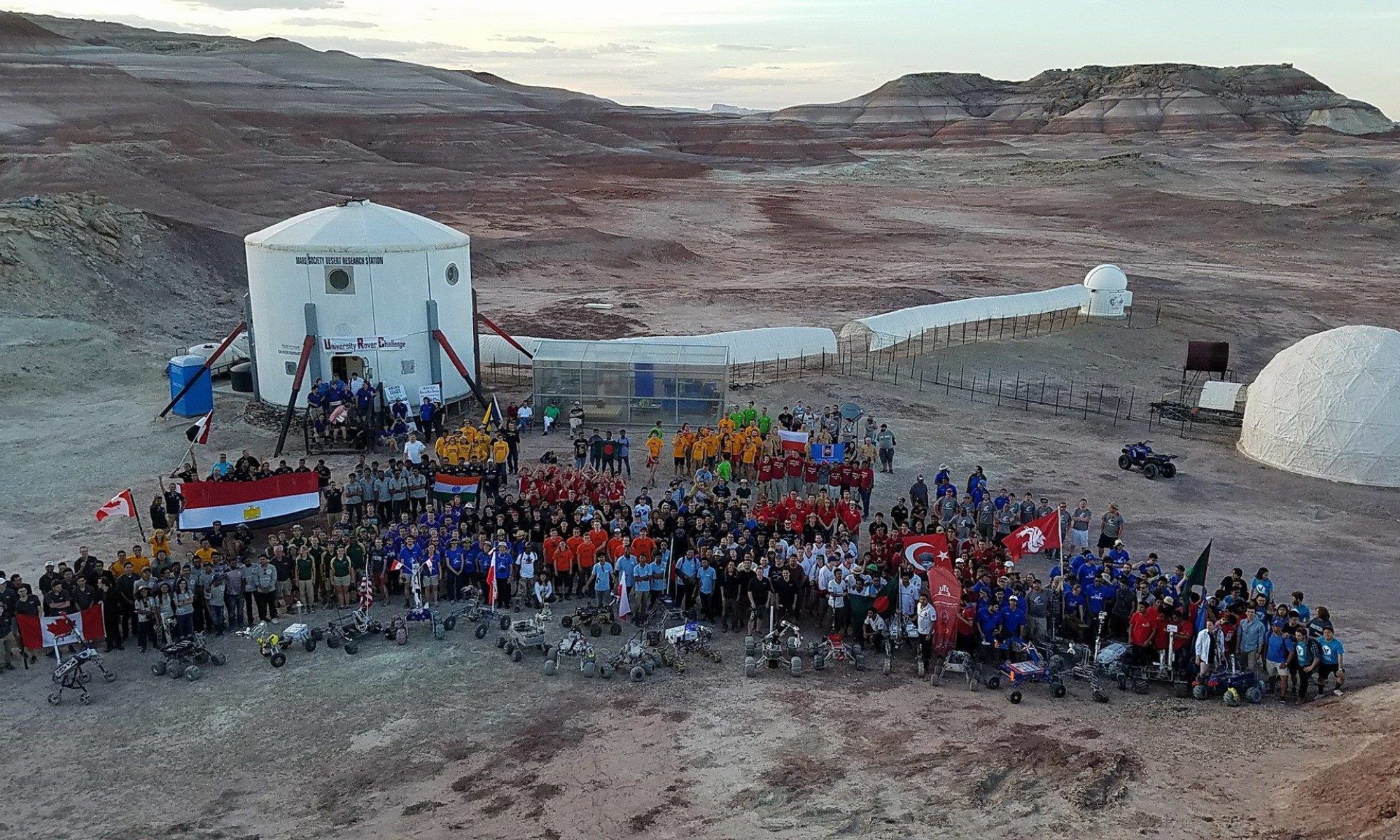Objective
The primary goal of today’s mission activities was to provide students with hands-on experience using a litter in the field to rescue a patient with a simulated broken femur. Students applied wilderness first aid principles and engineering design concepts to real-time mission challenges, including fixing communications and responding to an off-nominal situation.
Morning Briefing
The day began with a briefing on the mission objectives and safety protocols. Students were divided into EVA teams and designated specific roles, including medical officers, engineers, and communications specialists. The briefing included an overview of EVA procedures, emergency response strategies, and the environmental hazards associated with the simulated Martian terrain.
Simulated EVA Activities
Medical Emergency Response and Stretcher Transport
Objective: Assess, stabilize, and transport an injured astronaut using a stretcher while coordinating between separated groups.
Teams navigated through rugged terrain to reach a simulated casualty.
Students applied wilderness first aid, including spinal precautions, wound management, and transport strategies.
A stretcher was used to safely transport the patient, requiring coordinated teamwork between two separated groups.
Effective communication with mission control and between field teams was emphasized to relay patient status and coordinate movement.
Engineering Challenge – Communications Antenna Placement and Relay
Objective: Identify, repair, and place a communications antenna in a higher location to improve signal strength while practicing complex communications relay.
Students assessed the terrain to determine the optimal elevated location for the communications antenna.
Teams worked together to transport and securely install the antenna at the selected site, ensuring structural stability and optimal signal transmission.
The challenge tested the integration of engineering skills with mission-critical thinking under time constraints.
Students practiced structured communication techniques to relay complex messages between the separated field teams and the Hab, ensuring clarity and accuracy in mission-critical updates.
Debriefing and Lessons Learned
Following the EVAs, students participated in a debriefing session where they discussed key takeaways, challenges faced, and strategies for improvement. In this EVA, students learned the importance of team structure and dynamic re-structuring to meet the needs of the mission and dynamic medical emergencies. The role of clear and precise communication in high-stakes situations was particularly highlighted as a vital skill for future space missions.

